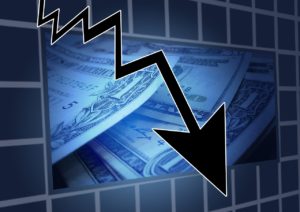Non-traditional Inverse or Leveraged ETF Funds are very risky.
 Unlike a traditional Standard and Poors Index fund, which would be expected to track an S&P index, inverse and/or leveraged ETF funds, also known as “non-traditional ETFs” are designed to accomplish the opposite or inverse. So for example, if the value of an index, the overall market or any particular index of securities within an market industry or subgroup goes down, the value of inverse ETF, or sometimes called a “bear” or “short” ETF, would be expected to go up.
Unlike a traditional Standard and Poors Index fund, which would be expected to track an S&P index, inverse and/or leveraged ETF funds, also known as “non-traditional ETFs” are designed to accomplish the opposite or inverse. So for example, if the value of an index, the overall market or any particular index of securities within an market industry or subgroup goes down, the value of inverse ETF, or sometimes called a “bear” or “short” ETF, would be expected to go up.
Also a leveraged ETF fund is designed move multiples of the market. So for example, a leveraged ETFs may be 2X or 3X, meaning that if the market or index goes up 1%, these securities could be expected to go up by 2% or 3%, or double or triple the movement of the underlying index.
However, both securities are leveraged to achieve these results, and are associated with higher transactions costs as opposed to ETFs which merely track the market. Moreover, because particularly inverse ETF funds reset after each trading period, based upon market conditions,
These securities are not suitable to be owned as longer term investments or for more than a few trading sessions, particularly in volatile markets. Accordingly, as a general matter, these securities are not for hedgers but are most appropriate for speculators.
 As early as January 2009, financial publications began to warn investors of these risks. According to Morninstar, the UltraShort S&P 500 ProShares SDS is an “expensive and extremely risky fund.” Morninstar also warns investors that using this fund as a hedge the funds leverage vastly increases risk and volatility, and accordingly these funds may not be appropriate for all investors.
As early as January 2009, financial publications began to warn investors of these risks. According to Morninstar, the UltraShort S&P 500 ProShares SDS is an “expensive and extremely risky fund.” Morninstar also warns investors that using this fund as a hedge the funds leverage vastly increases risk and volatility, and accordingly these funds may not be appropriate for all investors.
Nonetheless, in connection with the recommendation and sale of inverse or leveraged ETFs, many stockbrokers and investment professionals do not fully understand the risks and characteristics of these securities.
In 2009, FINRA’s Enforcement Department’s Strategic Programs Group conducted an inquiry regarding the sale of inverse, leveraged, and inverse-leveraged Exchange Traded Funds and subsequently, FINRA issued Notice to Members 09-31, reminding firms of their sales practice obligations in connection with leveraged and inverse ETFs.
In particular, FINRA warned that recommendations to customers must be suitable, and must be based upon the broker’s full understanding of the terms and features of the ETF product being recommended. FINRA also reminded its members that all sales materials related to leveraged and inverse ETFs must be fair and accurate and that firms must have adequate supervisory procedures in place to ensure that these obligations are met. According to FINRA, “Firms must train registered persons about the terms, features and risks of all ETFs that they sell, as well as the factors that would make such products either suitable or unsuitable for certain investors.”
 Similarly, at or about the same time, the FINRA and the Securities & Exchange Commission issued an Investor Alert to the investing public entitled “Leveraged and Inverse ETFs: Specialized Products with Extra Risks for Buy-and-Hold Investors,” and warned that before purchasing an inverse or leveraged ETF, investors should also consider seeking the advice of an investment professional, and to be sure to work with someone who understands your investment objectives and tolerance for risk. According to the Investor Alert, the customer’s “ investment professional should understand these complex products, be able to explain whether or how they fit with your objectives, and be willing to monitor your investment.”
Similarly, at or about the same time, the FINRA and the Securities & Exchange Commission issued an Investor Alert to the investing public entitled “Leveraged and Inverse ETFs: Specialized Products with Extra Risks for Buy-and-Hold Investors,” and warned that before purchasing an inverse or leveraged ETF, investors should also consider seeking the advice of an investment professional, and to be sure to work with someone who understands your investment objectives and tolerance for risk. According to the Investor Alert, the customer’s “ investment professional should understand these complex products, be able to explain whether or how they fit with your objectives, and be willing to monitor your investment.”
Many brokerage firms, as a result, have stopped permitting solicited purchases of leveraged or inverse ETFs in traditional brokerage accounts. Many brokerage firms have also required their brokers to complete certain training before they are allowed to sell these products and all such transactions, even unsolicited transactions, are supposedly subject to enhanced oversight and review.
Since that time, securities regulators have taken more than a dozen regulatory enforcement actions against many of the major securities firms for their failure to train, and their failure to supervise their stockbrokers in connection with the sale of inverse or leveraged ETF funds to retail customers.
Guiliano Law Group
Our practice is limited to the representation of investors. We accept representation on a contingent fee basis, meaning there is no cost to you unless we make a recovery for you. There is never any charge for a consultation or an evaluation of your claim. For more information, contact us at (877) SEC-ATTY.
For more information concerning common claims against stockbrokers and investment professionals, please visit us at securitiesarbitrations.com
To learn more about FINRA Securities Arbitration, and the legal process, please visit us at securitiesarbitrations.com
